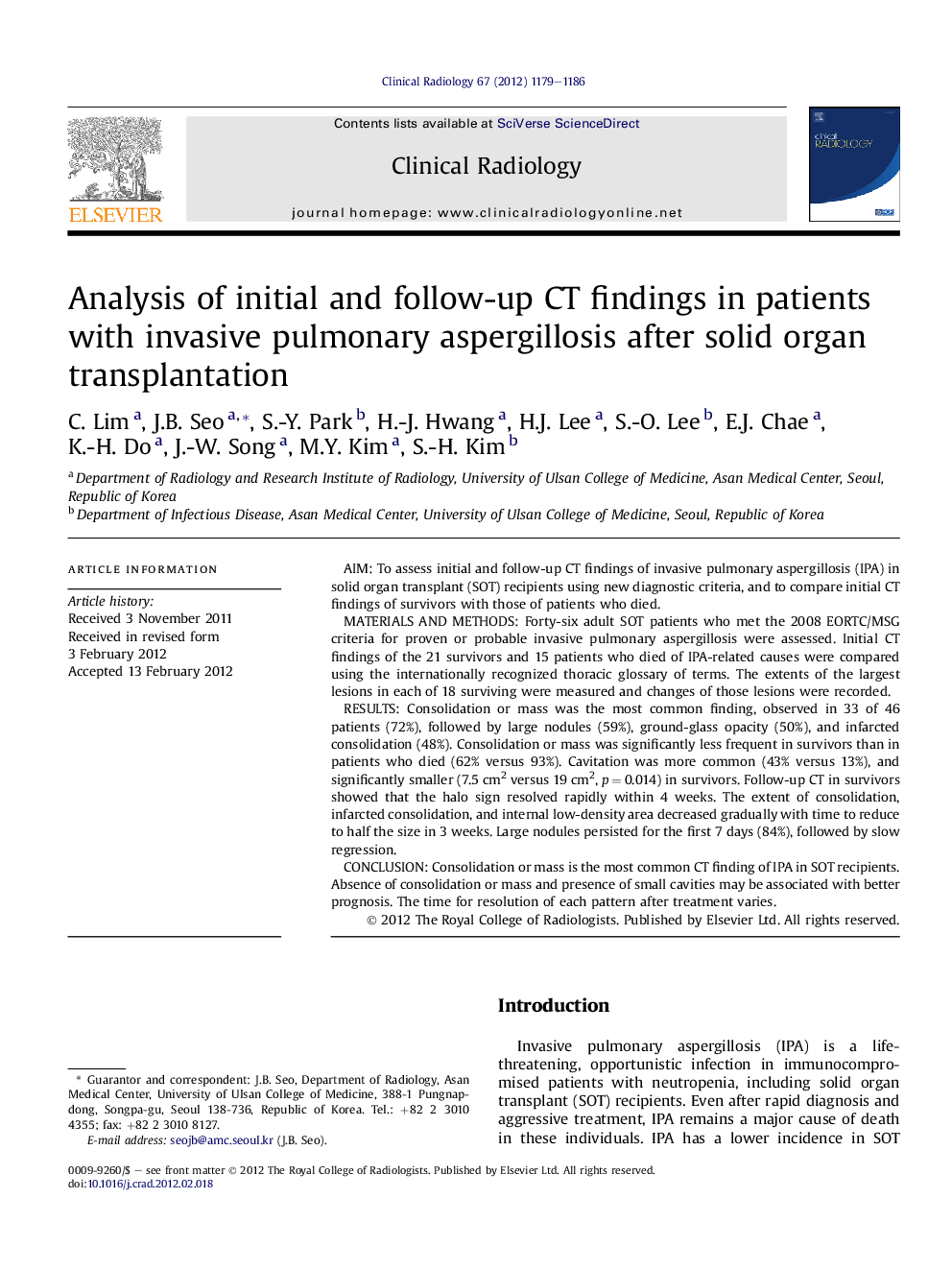| Article ID | Journal | Published Year | Pages | File Type |
|---|---|---|---|---|
| 3982870 | Clinical Radiology | 2012 | 8 Pages |
AimTo assess initial and follow-up CT findings of invasive pulmonary aspergillosis (IPA) in solid organ transplant (SOT) recipients using new diagnostic criteria, and to compare initial CT findings of survivors with those of patients who died.Materials and methodsForty-six adult SOT patients who met the 2008 EORTC/MSG criteria for proven or probable invasive pulmonary aspergillosis were assessed. Initial CT findings of the 21 survivors and 15 patients who died of IPA-related causes were compared using the internationally recognized thoracic glossary of terms. The extents of the largest lesions in each of 18 surviving were measured and changes of those lesions were recorded.ResultsConsolidation or mass was the most common finding, observed in 33 of 46 patients (72%), followed by large nodules (59%), ground-glass opacity (50%), and infarcted consolidation (48%). Consolidation or mass was significantly less frequent in survivors than in patients who died (62% versus 93%). Cavitation was more common (43% versus 13%), and significantly smaller (7.5 cm2 versus 19 cm2, p = 0.014) in survivors. Follow-up CT in survivors showed that the halo sign resolved rapidly within 4 weeks. The extent of consolidation, infarcted consolidation, and internal low-density area decreased gradually with time to reduce to half the size in 3 weeks. Large nodules persisted for the first 7 days (84%), followed by slow regression.ConclusionConsolidation or mass is the most common CT finding of IPA in SOT recipients. Absence of consolidation or mass and presence of small cavities may be associated with better prognosis. The time for resolution of each pattern after treatment varies.
